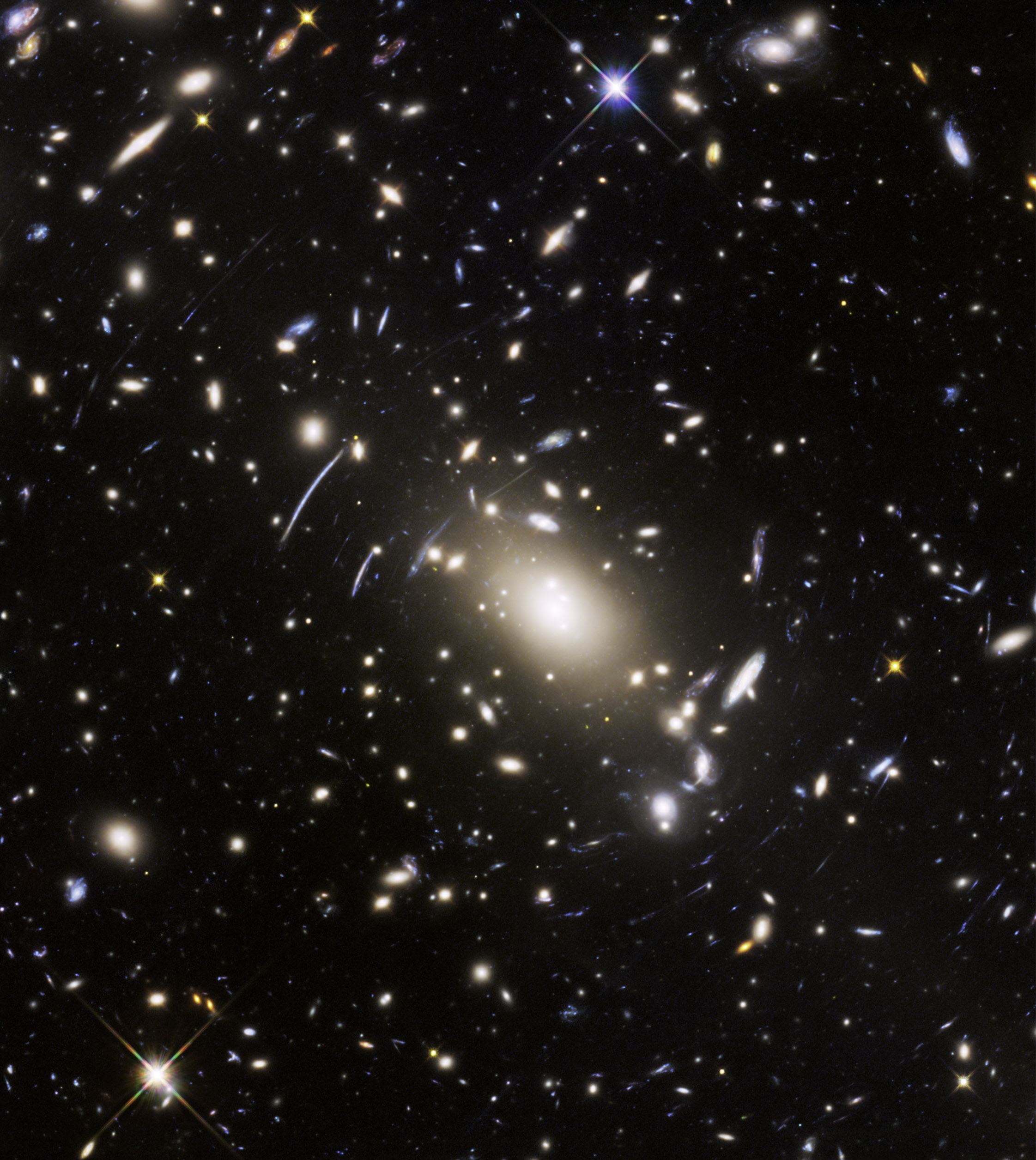
In a sense, all astronomical images taken from Earth are a look into the past, since it takes time for light from far away galaxies to travel through space and reach us. This image, released by Hubble today, shows the distant galaxy cluster Abell S1063 as it was four billion years ago.
That might seem like a long time, but what astronomers are really excited about is the opportunity to explore a time even earlier than this, right after the Big Bang. This cluster allows them to peer into space history through an effect called gravitational lensing. The effect occurs when “the huge mass of the cluster distorts and magnifies the light from galaxies that lie behind it,” explains a Hubble press release, making galaxies visible that would otherwise be too faint to observe.
Sixteen galaxies have been found so far using this method, including one from just a billion years after the Big Bang. Through the Frontier Fields program, two more huge clusters are scheduled to be observed over the next few years.
More Must-Reads from TIME
- Why Biden Dropped Out
- Ukraine’s Plan to Survive Trump
- The Rise of a New Kind of Parenting Guru
- The Chaos and Commotion of the RNC in Photos
- Why We All Have a Stake in Twisters’ Success
- 8 Eating Habits That Actually Improve Your Sleep
- Welcome to the Noah Lyles Olympics
- Get Our Paris Olympics Newsletter in Your Inbox
Contact us at letters@time.com